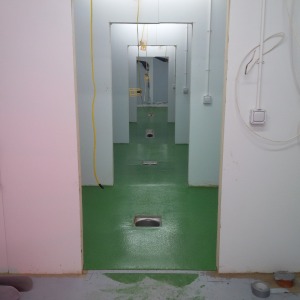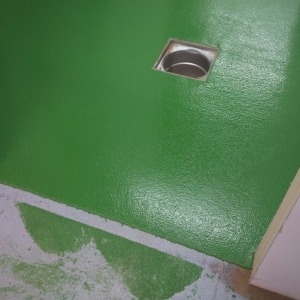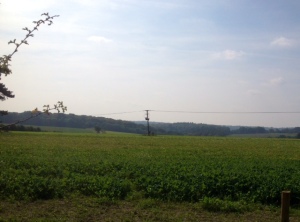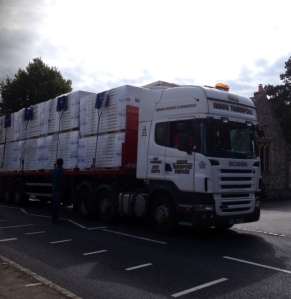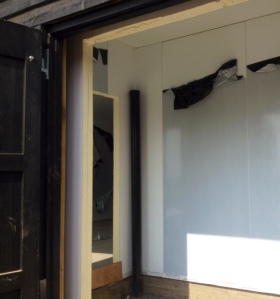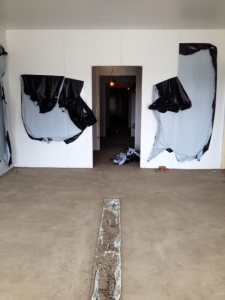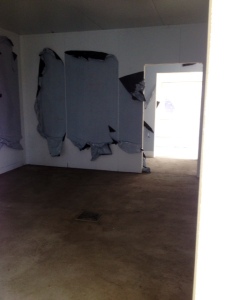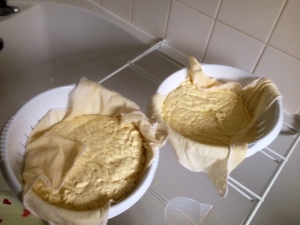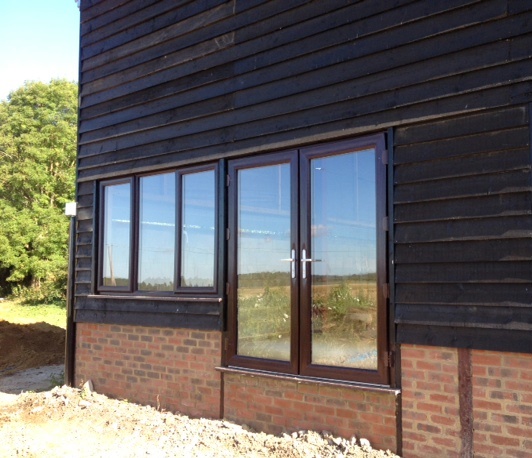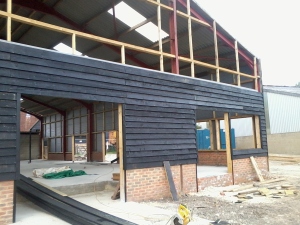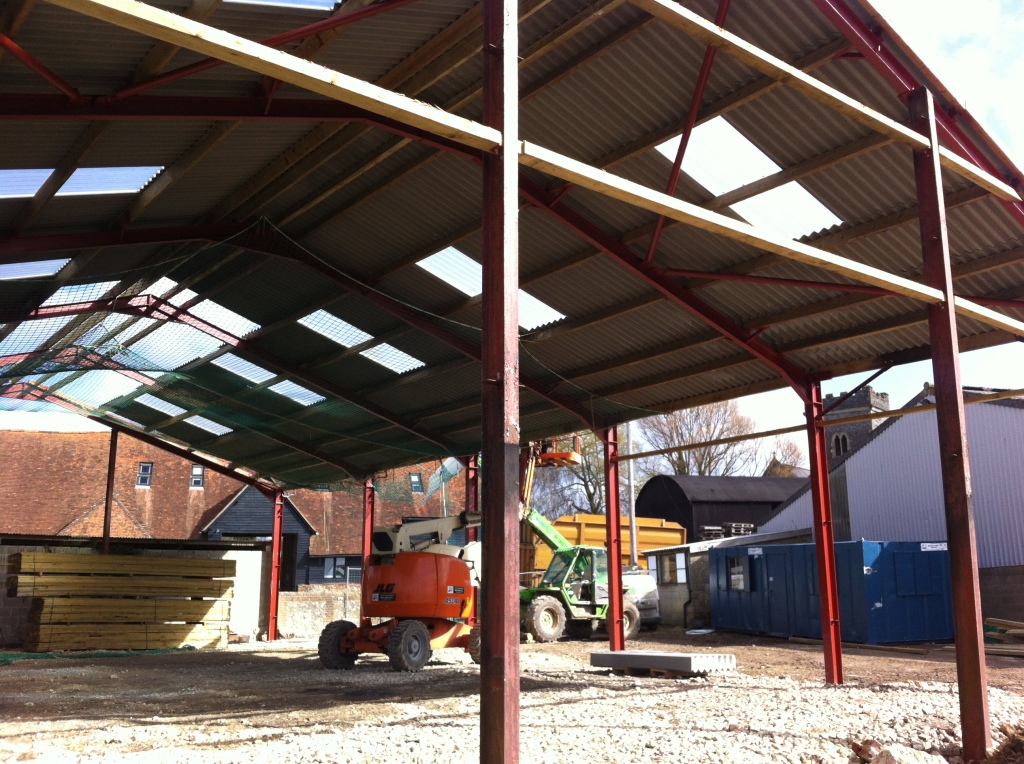So. I’ve held back from writing this blog post for a while because I didn’t know how to phrase it but I figure the only thing to do is be honest.
It all went tits up. Well it did for me at least.
When I last left blogging we finally had a floor in at Nettlebed after several abhortive attempts and a lot of extra spend. It was angled beautifully and when we finally got in to clean it, it rewarded us by draining wonderfully. But it stained with hypochlorite and there were concrete or mud stains we couldn’t remove however hard we scrubbed. Even the final solution we had placed our hopes on was far from perfect. Is there a truly great flooring company out there? According to the Nettlebed experience, not unless you micro manage them. The floor set our timing way back. This meant we were finally ready to try an (un EHO approved) make on the 13th January. I left for a long-booked 6 week holiday to a very important wedding in New Zealand on the 15th January. The timing could not have been worse.
Between them, Rose and super-cheesemaker Tee kept production going until I got back at the end of February. They battled problems from low maturing room temperatures to over acidification in the make. They tried not to bother me on holiday and called in the cavalry: Paul Thomas and Bronwen Percival of the SCA Technical Team.
I got back to find a quicker recipe, more in line with Reblochon, than the one I’d worked on in the kitchen. It wasn’t exactly the direction I had been heading in, but on the other hand, the last 2 batches from February, made by Tee directly after the Paul Thomas and Browen visit and following their swifter recipe were perfect. Rich orange-red rinds and a yoghurty, buttery, creamy interior with an succulent crumble in the centre. It was the tantalising Taleggio of our dreams but being raw milk, had so much more to offer than any Taleggio we’d tasted so far.
We duly sold them to local restaurants and to Neal’s Yard Dairy, where they met with a great reception. We tasted them to NYD customers just before April 2015 and had amazing feedback. Unfortunately that was our last hurrah.
After I’d been back for 1 make, we increased to 500 litres; a full vat. On the first day, we noticed, with surprise, that rather than being harder work at the stirring stage, it seemed to gather its own momentum and work more efficiently than in the 200 litre makes we had done before and during my holidays. The acidities dropped. If we were aiming for a Reblochon, this was a good thing. It was getting further away from the recipe I had played with in my kitchen, but Rose and Tee wanted to follow this faster recipe and having had a 6 week holiday while they got the place off the ground, I felt I ought to oblige. Besides, it ought to still make good cheese.
Then the problems started. First our maturing rooms started to heat and cool on the wrong cycle. We had deliberately chosen to have pipework of hot and cold water rather than fans circulating air cooled to a specific temperature. With minimal air movement, we were less prone to the cheese drying out. In theory.
Unfortunately, if the heating and cooling cycles aren’t aligned well they create the perfect environment for drying the crap out of your cheese. This happened in March. The rinds looked like used and dried out elastoplast after a few weeks from beautiful plump pink reds earlier. Rose spotted this and we called in Capital Refrigeration to fix the problem, but unknown to us even as we fixed this problem, another was brewing: milk quality.
Merrimoles Farm are very confident in their milk production. Dairycrest consider them exemplary due to their exceptionally low bacterial counts. Trouble is, Dairycrest don’t make raw milk cheese and amongst those low counts was a tricksy blighter called chlostridium Tyrobutyricum which feeds on proteins in the cheese and gets going as the cheese starts to break down. It’s a pretty cruel confidence trick to the cheesemaker since you try and fix the problem in the make. Just as you hope to have evidence the problem is solved, the cheeses start to blow up like balloons and smell putrid.
Getting to the bottom of that problem took us about a month as we originally blamed our make. Tee and I worked very hard to speed up the make and eliminate any possibility of whey trapped between layers of curd and then fermenting. This could be a source of gas too. However when we finally called in professional help in the form of Paul Thomas again, it was confirmed that the problem came in with the milk. It was due to silage feeding. Chlostridium Tyrobutyricum survives anaerobically in silage but generally only in old or poorly made silage. Merrimoles Farm had won awards for its silage so it seemed likely it was due to end of season silage, which would have perhaps had more time to ferment.
This issue seemed to get better as the cows moved outside onto grass and we had, in our pockets, the idea of using egg white Lysosyme to inhibit bacteria in the silage milk which we hoped would work. However by this time, the financial crunch had come. What with delayed building, overspending on the floor and cheese problems we’d hit crunch time. Unfortunately for me, a full time cheesemaker’s salary was too expensive and production was scaling right back to one day a week. And so I was out of a job.
Any regrets? Well of course it would have been great if it had been a roaring success and I was a part of that, but hey that’s ego at the end of the day. I have learned so much about starting a business from this experience and in particular from starting a dairy. On a personal note, too, if I hadn’t moved here I would never have met my partner either and I wouldn’t take that back for the world.
But finally, I wish Nettlebed Creamery very success in the world. I’ve played my part in getting them to where they are and I hope that has been useful. Yes, I am sorry it won’t be my cheese that finally graces the cheese counters of delis across the country, but I would be more sorry if St Bartholomew sank before it swam. The recipe has changed since I left. It may be a firmer cheese, a more acidic cheese – who knows. That choice is down to Rose and Tee now. But I hope, and have good reason to believe, it will be a great cheese, eventually
